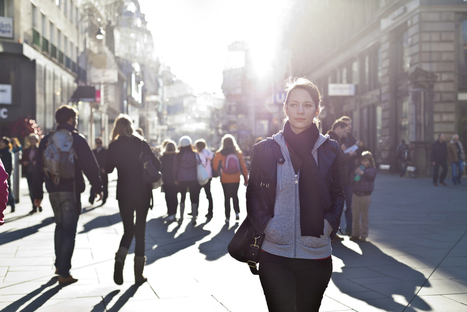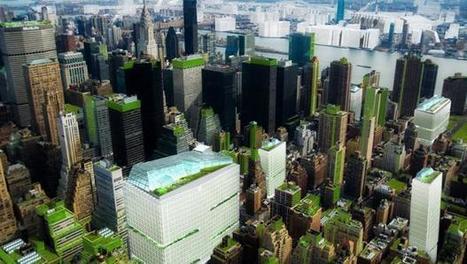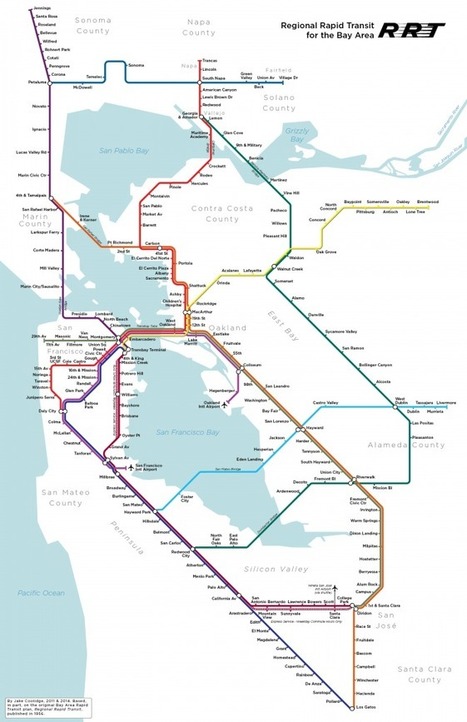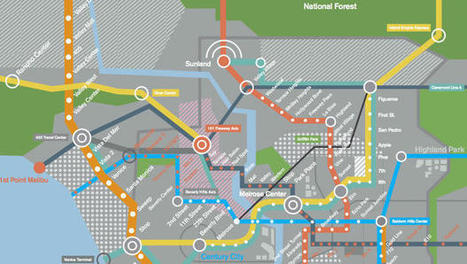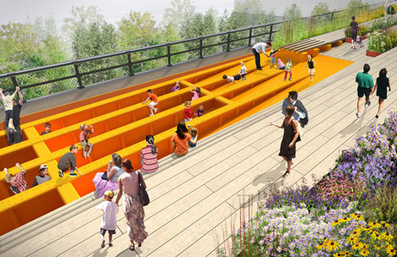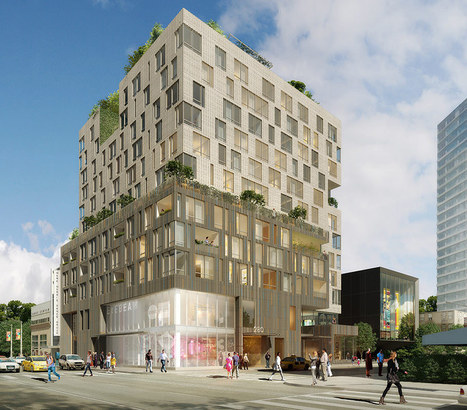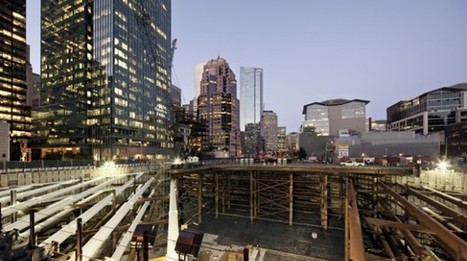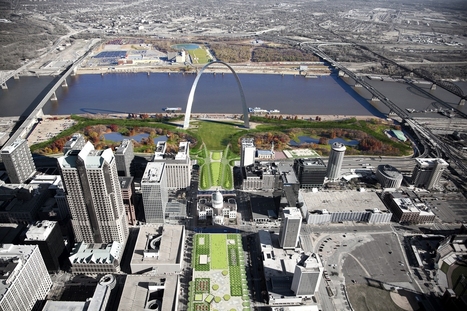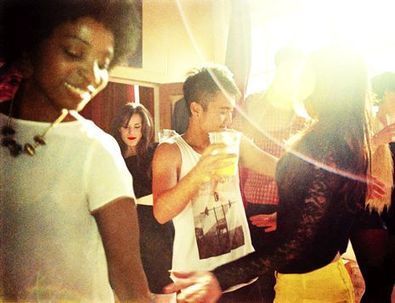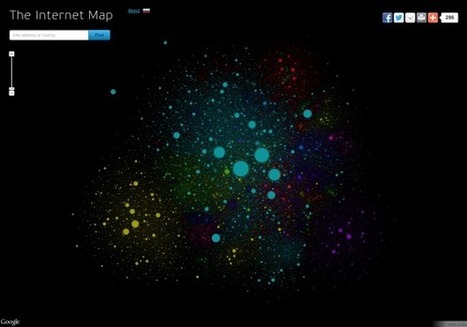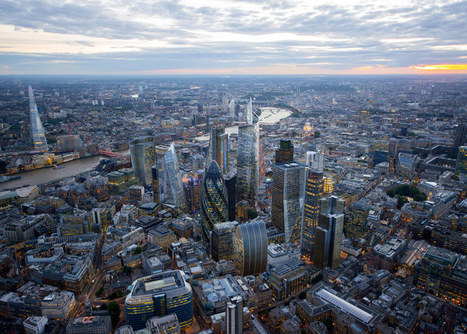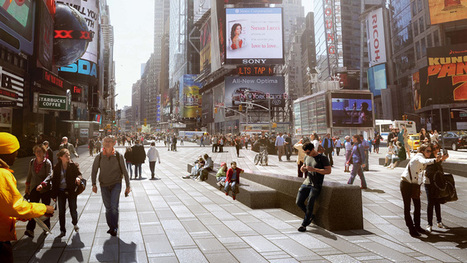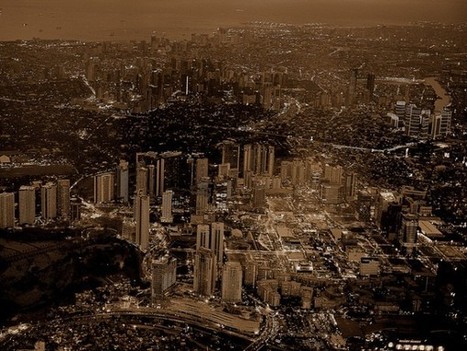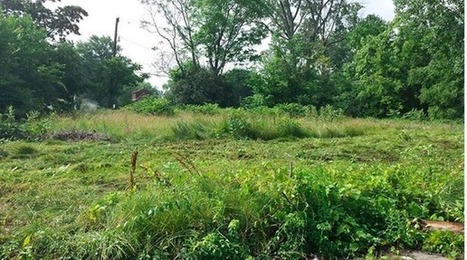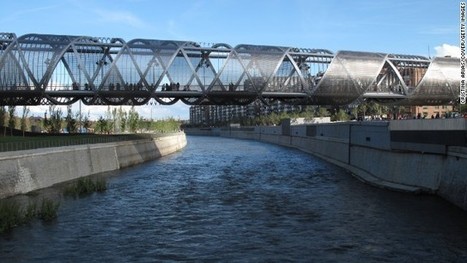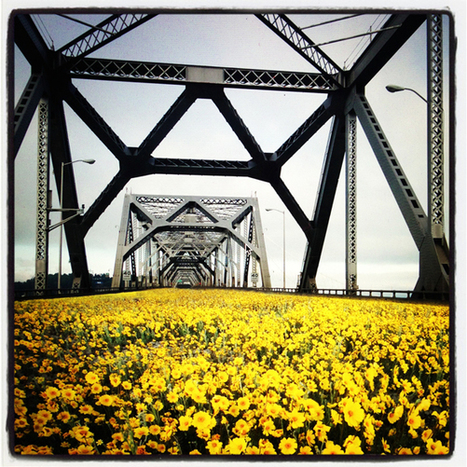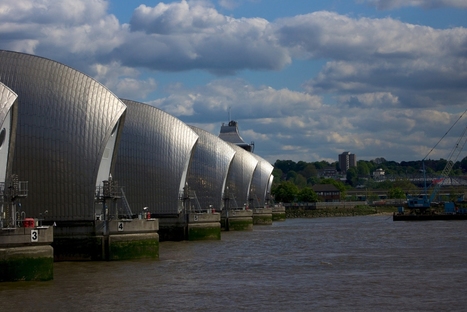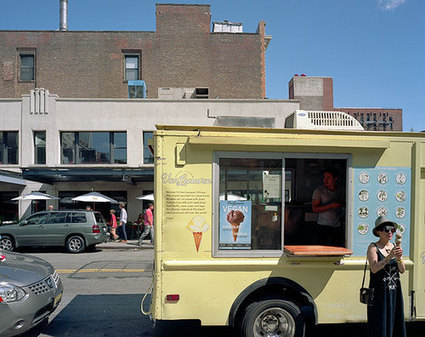 Your new post is loading...
 Your new post is loading...
Another day, another article about millennials supposedly flocking to cities, leaving their native suburbs bereft. Last week, the New York Times informed us that there has been a precipitous decline in the number of 25- to 44-year-olds moving into some of the Big Apple’s affluent suburbs in Westchester, Nassau, and Suffolk counties. In classic journalistic trend-story fashion, the Times notes that some wealthy suburbs of Boston, Chicago, and Washington, D.C., are facing similar problems.
Like former mayor Michael Bloomberg, a group of researchers envision a sustainable New York City -- with bikes, planting new trees, reducing citywide greenhouse gas emissions -- but that's where the similarities end.In a bold new "thought-experiment," the Terreform Center for Advanced Urban Research, a multidisciplinary non-profit organization, tried to envision a fully sustainable New York City, with entire streets and avenues converted into greenways and farms.In a city with nearly 8.3 million residents, 4 million acres of food-producing land -- roughly the size of Connecticut -- is required to feed their appetites annually. Combined with carbon emissions from transporting the food -- these so-called "food miles" -- it's no wonder why some studies list food production as the one of the leading contributors to climate change.
Via Lauren Moss
If you live in a city and take public transit, chances are you've looked at the system map and thought to yourself, "I wish this thing went everywhere." If so, you're not alone. There's a whole group of daydreamers just ...
Look upon the map and imagine what might be in the not-too-distant-future Joaquin Phoenix inhabits.
What happens when you build mobility systems entirely around safety? I found out the morning I arrived in Houten, a design experiment set amid the soggy pastures of the Dutch lowlands.
I stepped off the train, eyes blurry with an Amsterdam-size hangover, and found a bustling downtown without a car in sight--just throngs of white-haired senior citizens wheeling past on bicycles, their baskets loaded with shopping. I was greeted at Houten’s city hall by the mild-mannered traffic director, Herbert Tiemens, who insisted that we go for a ride. He led me down Houten’s main road, which was not actually a road but a winding path through what looked like a golf course or a soft-edged set from Teletubbies: all lawns and ponds and manicured shrubs. Not a car in sight. We rolled past an elementary school and kindergarten just as the lunch bell rang. Children, some of whom seemed barely out of diapers, poured out, hopped on little pink and blue bicycles, and raced past us, homeward.
New images unveiled this week reveal that the third and final phase of New York's High Line park will feature an enclosed amphitheatre filled with plants. The bowl-shaped structure will create a new north-east gateway to the popular park - created across an abandoned elevated railway by architects Diller Scofidio + Renfro, landscape architects James Corner Field Operations and planting designer Piet Oudolf - and will form part of a new stretch wrapping around New York's old freight train yards. Named The Spur, the structure will be positioned at the widest point of the High Line, across the intersection of 10th Avenue and West 30th Street, and is conceived as "an immersive experience of nature.
Via Lauren Moss
A new mixed-use development, called “EyeBAM,” is the latest addition to Brooklyn’s burgeoning Downtown Cultural District. Dattner Architects, Bernheimer Architecture, and SCAPE / Landscape Architecture, have been selected by the Mayor’s Office and the New York City Department of Housing Preservation and Development to design a 12-story building with109 apartments (40 percent affordable and 60 percent market rate), a restaurant and two arts-and-science-focused organizations, Eyebeam and Science Gallery. Designed to engage with neighboring cultural institutions, the restaurant will flow into the new Arts Plaza, which will include outdoor seating to activate the space. To further accentuate the cultural space, the architects plan to implement a glazed exterior on the lower levels. The material palette, composed of terracotta and brick, is a nod to Brooklyn’s architectural history. “We wanted to create a scale and texture to the building that was both contextual to the neighborhood but also gave the building its own identity."
Via Lauren Moss
Every crane on every corner tells a story, and the two dozen–plus steel jibs currently soaring overhead have this to say about San Francisco: We're not messing around. With the economy booming and the cork finally popped on mega-projects that have been bottled up in the pipeline since the Newsom era, there are nearly 150 major real estate developments under construction in the city, and another 145 or so are through the approval process.
Last week, Architizer and Arup put out a call for ideas to make New York City a better place for its residents and the 1 million additional people projected to arrive in the next few decades. As a follow-up, we’ve gathered a few examples of Arup projects from around the world that demonstrate the way that design can enhance everyday life in urban areas. One, the UK's high-speed rail line from London to the Channel Tunnel, was a massive, decades-long effort that had the regeneration of a whole city sector in its goals from the outset. Others, such as a water recycling facility in a Melbourne park, are more modest in scale and scope, but present interesting models for dealing with challenges common to many cities around the world: resource constraints, housing shortages, disadvantaged neighborhoods, natural disasters, and more.
Via Lauren Moss
In recent years, San Francisco has become the capital of what someone described to me as “three-business-card life.” People might give a lot of their time to one startup while keeping a substantial equity share, and maybe a nominal job title, in...
The internet is a worldwide network of computers, but it seems very intangible to most of us. In a general sense, the internet is made up of a lot of different components: Websites, users, servers, browsers, networking cables, and more. Some of these things have a physical component, and some of them do not, but even the ones that do have a physical component can be hard to conceptualize spatially. These maps help to lend that spatial component to the Internet.
Via Lauren Moss
Planners present a smart vision for any city seeking to accommodate innovation. A new cluster of tech activity in Brooklyn is taking shape, showing some of the momentum its West coast counterpart had decades ago, already home about 500 tech and creative companies, with demand for space expected to double by 2015. But how do you make sure a dense urban area can accommodate that growth and transform into a zone where connectivity is a given and tech-fueled civic experimentation is encouraged? In other words, what does it take to make Brooklyn the city of tomorrow? That’s just what the architects and urban designers at WXY Studio were tasked with figuring out... Read the complete article to find more on the strategic plan for the Brooklyn Tech Triangle, which lays out in detail what it will take to establish a thriving tech hub in the heart of Brooklyn.
Via Lauren Moss
Many cities are already getting a jump start on smart water solutions and their work provides models for other places dealing with water challenges. In the U.S., the infrastructure isn’t designed to handle the increased floods and droughts that come with global warming and we need to be smarter about our precious water supply in the coming years. Many cities are already getting a jump start on smart water solutions and their work provides models for other places dealing with water challenges.
Via Lauren Moss
|
More and more cities in the Midwest and Sun Belt are trying to develop mass transit systems, but GOP-controlled state legislatures are getting in the way.
Large cities produce large amounts of trash and create a lot more to transport it to landfills. Looking at New York City as the site, local practice Present Architecture posits the ‘Green Loop’ as a solution to large scale waste management. Intended to be used as a network along the city’s waterfront, the floating energy production oasis has a street-level composting facility, elevated park, and barges and railways to efficiently transport the compost to other locations. Trash is then transported only a short distance to the borough’s Green Loop which offers more public space as it responsibly processes waste, tackling two pertinent urban issues simultaneously. The master plan proposes the construction of 10 hubs around the 520 miles of coast in the city effectively alleviating congestion issues and dramatically lowers unnecessary energy waste while contributing 125 acres of public park land.
Via Lauren Moss
This series of images by architectural rendering studio Hayes Davidson envisages how London's skyline might look in 20 years time. Over 200 towers with a height of 20 storeys or greater are planned in the UK capital over the next two decades and Hayes Davidson has visualised how these new buildings will appear alongside existing skyscrapers such as Renzo Piano's The Shard and Norman Foster's The Gherkin.
The images were created for an exhibition opening later this year at New London Architecture (NLA) entitled London's Growing... Up! which will chart the growth of tall building construction in London since the 1960s and look at the impact skyscrapers will have on the city in the near future. "As London's population gets bigger and bigger, and new development for London takes place within the constraints of the green belt, we have to increase the density of the city," said Peter Murray, who is chairman of NLA and the exhibition curator.
Via Lauren Moss
Architecture firm Snøhetta has concluded the first phase of a major overhaul of New York's Times Square, continuing the initiative started in 2009 to pedestrianise large sections of the popular tourist destination. The $55 million reconstruction project is the largest redesign of the square in decades and encompasses the transformation of five public plazas between 42nd and 47th Streets, which will be entirely reconstructed to remove any traces that vehicular traffic once ran through the square along the Broadway...
Via Lauren Moss
Gentrification is a highly charged issue, to say the least. Perhaps that's why a new analysis by Daniel Hartley, a research economist at the Cleveland Federal Reserve, has generated so muchattention. Hartley’s study used Census data to examine the extent of gentrification across America's 55 largest cities over the past decade. (His data track the change between the 2000 Census and the results of the 2005-9 American Community Survey, which he shorthands as 2007). He defines gentrification as a neighborhood (more precisely, a Census Tract) that moved from "the bottom half of the distribution of home prices in the metropolitan area to the top half between 2000 and 2007."
Cities are experiencing rapid growth across the Global South. With this growth however, also comes economic disparity and environmental degradation. Can microfinance offer a solution to these growing concerns? With mass urbanisation has also come significant concern with regard to economis disparity and environmental sustainability. From one perspective, rural to urban migration is thought to be helping to alleviate poverty by pushing more people into the middle class. Additionally, increased urban population density is seen to be ‘green’ because it lowers dependency on private vehicle use and increases resource efficiency. From another perspective however, mass urbanisation also causes a variety of problems across a range of geographic scales: socio-economic inequality, slums, sprawl, deforestation, air pollution, excessive waste and poor water management, to name a few. There is no ‘silver bullet’ for these problems...
Via Lauren Moss
The city's emergency manager has approved a deal to turn scores of blighted properties into a lush green space with maple and oak trees.
Moyan BrennPutting the “sit” back in “city.” Walkable cities are great. But once you get where you’re walking, you want to relax, right?
Via Lauren Moss
A change of scene in Europe's cities CNN During the past two decades, a number of European cities have invested heavily in redeveloping blighted industrial river fronts, turning them into charming urban retreats that emphasize sustainability,...
Governments, urban planners, and architects and designers need to work together to figure out what resilience looks like, to understand its implications for different geographies and populations, and to establish policies and practices for implementing it on the ground. 'We asked Arup engineers what resilience looks like, its implications for different geographies and populations, and the best policies and practices for implementing it on the ground.'
Find their responses at the link.
Via Lauren Moss
Photographer Brian Rose has grown accustomed to chronicling urban change, one neighborhood at a time. Two years after producing a photo series with side-by-side shots of the Lower East Side of 1980 and today, he's done the same with the Meatpacking District (h/t Vanishing NY). Rose originally turned his lens to the area in 1985, well before gentrification took hold: "In the morning the meat-packing district was a vast open air scene of carnage. Sides of beef were hung from hooks that slid along overhead conveyors. Men in bloodied white coveralls grappled with the carcasses. ... As evening approached another kind of meat market took over—this one human trade–as prostitutes prowled the empty streets, many of them transvestites, overly tall females tottering about on high heels, while men in black leather sought the anonymous doors of sex clubs."
|

 Your new post is loading...
Your new post is loading...
 Your new post is loading...
Your new post is loading...












